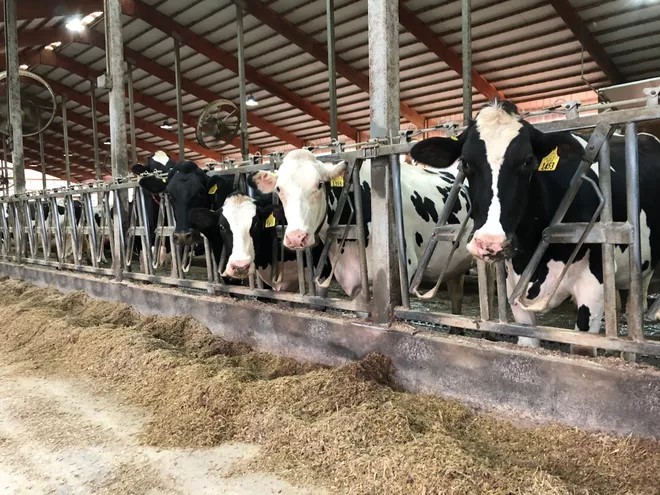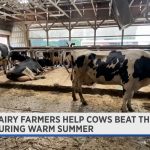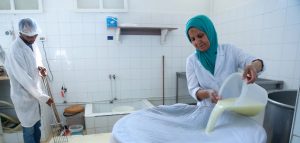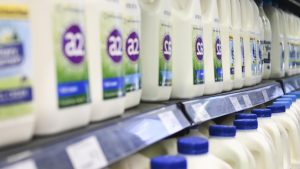
Cheddar barrels and 40-pound block cheese were on the decline since mid-July. By early August barrels had declined to $1.3075 per pound and 40-blocks to $1.6350. Dry whey which was as high as $0.70 per pound in May was just $0.475 early August.
Prices in recent trades have been moving up and down but are now higher than early August. Today barrels were $1.5050 per pound, blocks $1.73 and dry whey $0.52. The lower dry why price since May takes about $1 off the Class III price.
Lingering pandemic impact
As things returned to more normal with people eating out, fans returning to stands of sporting events, conferences and other public events being in person the sale of butter and cheese improved.
Compared to a year ago second quarter American cheese sales were 10.8% higher and other cheese was 5.4% higher. But fluid (beverage) milk is running below a year ago as people eat out more rather than at home meals.
In June fluid milk sales were 6.7% below a year ago. There is a concern that with increase cases of the Delta virus reinstating the wearing of masks again that consumers may back off some on eating out and attending public events. That could hurt butter and cheese sales. But schools are scheduled for in person learning this fall which will be positive for fluid milk and dairy product sales.
Dairy exports continue to support milk prices
Exports for June compared to a year ago were 7% higher for nonfat dry milk/skim milk powder, 16% for whey products, 67% for butter, but cheese exports were 13% lower. Cheese exports through June were still 2% higher. The volume of exports through June were 13% higher and exports could end the year at a record high. U.S. butter, cheese and nonfat dry milk/skim milk powder prices remain substantially lower than foreign export prices.
Also, milk production in Europe and New Zealand, two major exporters maybe no more than 1% higher than a year ago. Port congestion has and may continue to limit some exports.
Government purchases
Milk prices will get some support from government purchases. USDA has announced the purchase of cheese and fluid milk products for delivery the last three months of this year.
This will be in addition to USDA’s normal purchases of dairy products for school lunches and other food programs. Also, it has been announced that the SNAP program will be increased by 25% which could increase fluid milk and cheese sales.
Future sales, exports and production key
How milk prices finish out the year and going into next year will depend upon the sale of dairy products, level of exports and the level of milk production. The growth in milk production needs to slow to support higher milk prices. USDA estimates July milk production to be 2.0 higher than a year ago.
This is a lot of milk considering August milk production a year ago was up 1.9%. After increasing each month since July of 2020 cow numbers have declined two consecutive months with June down 6,000 and July 3,000.
Adverse weather has slowed milk per cow. Compared to July a year ago milk per cow was up just 0.7%. Weather impacted milk per cow in California, Idaho and New Mexico where each state experienced 0.7% less milk per cow.
California had the same number of cows resulting in 0.7% less milk, Idaho had 9,000 more cows resulting in just 0.8% more milk and New Mexico had 5,000 fewer cows resulting in 2.3% less milk.
Milk production for the other top five states were: Wisconsin +4.6%, New York +2.8% and Texas +7.2%. Wisconsin had 21,000 more cows and milk per cow was up 2.9%. New York had added 4,000 cows and Texas 35,000 cows.
Strong milk production occurred some other states. The increase in milk production and the number of additional cows were South Dakota 17% with 21,000 cows, Indiana 5.7% with 9,000 cows, Michigan 4.3% with 17,000 cows, Iowa 4.3% with 10,000 cows, and Minnesota 4.2% with 17,000 cows.
Milk production likely to slow down
With lower milk prices and higher feed costs, milk production is likely to slow for the remainder of the year and going into next year. On August 3rd USDA Drought Monitor had drought affecting 47% of the cow inventory.
Drought was affecting 64% of the alfalfa hay acreage and 37% of the corn production. With feed supplies tighter feed prices are going to be higher this fall and winter which will likely impact milk per cow and cow numbers as more lower producing cows are culled from the herd.
As of now it seems reasonable that Class III could be in the $17’s by September and for the rest of the year with low $18’s not ruled out for November and December.
Class III futures currently only reach a high of $17.50 in November. USDA lowered its price forecast from last month and has Class III averaging just $16.55 for the year compared to $18.16 last year.

























